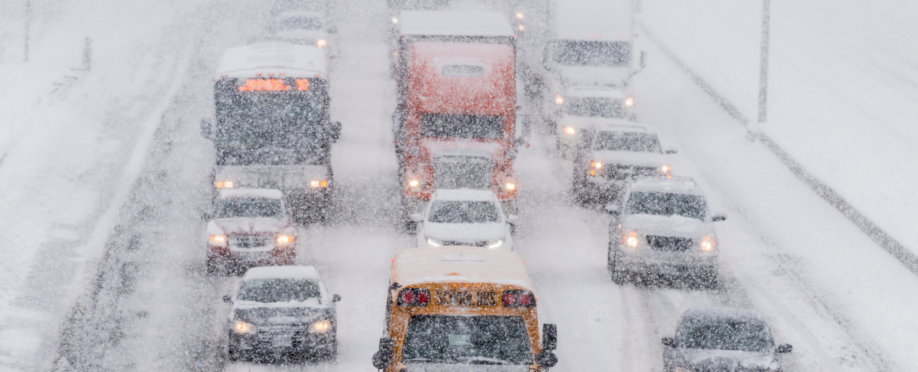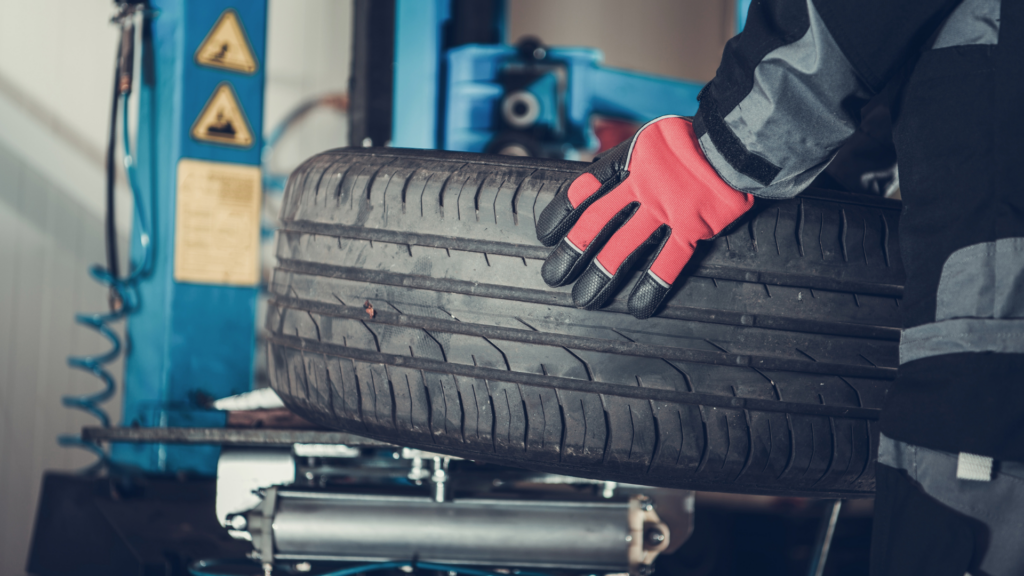
The Winter season will be here before we know it, and there is no question that it is one of the busiest seasons for Facilities Maintenance (FM) companies. That’s why it’s important for technicians to ensure that all vehicles are in great condition for optimal safety and performance.
With slippery roads and cold weather, Winter in all areas of the US can be risky for unprepared vehicles. In this Tech Talk, we recommend important steps all teams in the field should take to ensure that their vehicles are in top shape for the Winter.
Ensure Proper Tire Care
Having strong tires is crucial for the care of vehicles and the safety of technicians. Without proper pressure or tread on a tire, driving over wet or iced roads can lead to horrific accidents.
According to the U.S. Department of Transportation, over 24% of weather-related accidents occur on snowy, slushy or icy pavement and 15% happen during sleet or snowfall. Consumer Reports recommends that no tires should go below 4/32”, but in the Winter it should be double that for optimum safety – closer to 8/32”.
To help avoid weather-related accidents, be sure to regularly check that your tires maintain your vehicle’s recommended pound per square inch (PSI) tire pressure every month and that treads are intact.

Have Clear Visibility
Clear visibility is especially important to those driving larger vehicles with smaller blind spots. Having to focus on driving in stormy or snowy conditions can be incredibly difficult without the proper visibility.
Before traveling this Winter season, do an audit of your vehicle’s windshield and windshield wipers, checking for and fixing any cracks or chips in the glass, keeping ice scrapers/snow brushes on hand and replacing faulty wipers. Be sure to regularly clean windshields and windows prior to and following any job to ensure maximum visibility before driving for any extended period.
Along with ensuring you have clear visibility, maintain a firm grip on the wheel. Especially when visibility is difficult, having a firm grip on the wheel can help maneuver slick roads, heavy winds, and patches of ice. If the road is covered in ice or sleet and is too dangerous to safely maneuver, pull off to the side of the road.
In situations where the weather makes visibility difficult and you cannot safely pull off the road, we recommend you follow these procedures:
- Never assume the depth or thickness of any fog.
- Slow your vehicle’s speed gradually to avoid becoming a hazard for other motorists. Safe speed depends on the thickness of the fog and is left to your best judgment.
- Use low-beam headlights for optimum visibility in these conditions. Avoid the use of high-beam headlights, which reduces visibility while driving in fog.
- Windshield wipers and the defroster will increase visibility when driving in fog.
- Avoid passing other vehicles while driving in fog.
- Unless necessary, avoid stopping on any roadway while driving in foggy conditions.
- If you must stop, use the emergency lane, activate your emergency flashers and turn off the headlights.
Charge Your Battery
It’s normal for some technicians to have job assignments at stores that are far distances from each other. To help prevent breakdowns, check that your vehicle’s battery has maximum power. According to Firestone Complete Auto Care, a vehicle battery can lose about 35% of its strength at 32°F and can lose up to 60% at 0°F.
With your FM company’s support, you should make sure your vehicle has a strong battery and make any repairs or replacements at the beginning of Winter, before the busy season picks up. To maintain battery health and power, try charging the battery to its fullest power before getting on the road. Keeping a battery charger or voltage tester in the vehicle can help keep track of battery health and prevent any accidental breakdowns related to dead or damaged batteries.
Stay Prepared – and Warm!
The most important thing for any driver to remember throughout Winter is to always stay prepared! In addition to the above, make sure that vehicles have plenty of coolants, engine oil, and other fluids to help keep vehicles functioning and warm. Prepare for dips in weather by keeping thick coats and blankets on hand in vehicles to offer an extra layer of warmth.
At City, we recommend our technicians add personal protection in the case of extreme weather, such as thermal undergarments (and/or additional layers of clothing), insulated work gloves, beanie hats and/or earmuffs/covers, and thermal, wool or heavy crew socks and work boots. City also provides thermal work jackets for technicians to wear over their uniforms to help keep them protected while on the job.
Smart tip: Keep an emergency kit in your vehicles including items like bottles of water, blankets, jumper cables, road flares, portable chargers, food, gloves and hats that could be used in case of emergencies.
While Winter means something different for everyone depending on what part of the US (or world!) you live in, it’s always important to be prepared. At City, our first priority is that our teams arrive home in the same shape that they left for work each day. That’s why we provide our field teams with fully furnished vehicles with storage compartments, drop-down ladder racks, fuel and maintenance cards, and many more tools to ensure their safety and success.
Along with regular vehicle maintenance and an annual safety brief, City technicians in regions with snow and sleet are also equipped with snow chains and snow tires.
Having a proactive approach to driving in dangerous weather can save you from reacting to an accident when road conditions change. Montel Walcott, CBES Safety Manager
Montel Walcott, City Building and Engineering Services’ (CBES) Safety Manager, helps technicians to navigate dangerous driving conditions with safety briefs and training prior to the Winter season.
“It is very important that technicians inspect and prepare their vehicles for the winter, because having a proactive approach to driving in dangerous weather can save you from reacting to an accident when road conditions change,” he shares. “The main thing I tell techs to remember is that the number one rule when driving in icy conditions is to simply reduce your speed and increase your breaking distance.”

 2016: City US is established in North America, in partnership with Southeastern Grocers (SEG), servicing over 750 supermarkets across 7 southern states.
2016: City US is established in North America, in partnership with Southeastern Grocers (SEG), servicing over 750 supermarkets across 7 southern states. 1985: Willie and Susan Haughey establish City Refrigeration Holdings (UK) Ltd in Glasgow, UK.
1985: Willie and Susan Haughey establish City Refrigeration Holdings (UK) Ltd in Glasgow, UK. 2009: City Australia launches in Melbourne, in partnership with Coles, servicing over 700 supermarkets across the country.
2009: City Australia launches in Melbourne, in partnership with Coles, servicing over 700 supermarkets across the country. 2015: City Asia launches in Kuala Lumpur, Malaysia, in partnership with Dairy Farm, servicing over 205 supermarkets across the region.
2015: City Asia launches in Kuala Lumpur, Malaysia, in partnership with Dairy Farm, servicing over 205 supermarkets across the region.